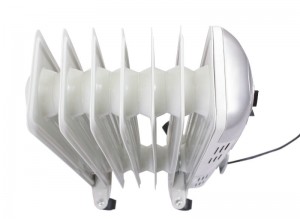Oil Furnace Flue Cleaning
With the start of the New Year have come bitterly cold temperatures, especially in the Long Island area. Most have rightfully taken shelter indoors, huddling under blankets with the furnace running on high. In order to keep that furnace functioning at its best, it requires some regular maintenance. Experts recommend having a technician service it yearly, but these service calls do not always include cleaning the flue for oil furnaces. If a flue cleaning is not performed, it is important to have it done anyway, even if that means a separate appointment.
When the furnace runs, the burned oil produces a variety of substances, not the least of which is soot. This soot is black and messy, and it is meant to be expelled out of the furnace through the flue. However, as the soot travels through the flue, it often clings to the interior of the flue. Over time, it builds up and can even close off the air flow through the flue. In turn, the toxic flue gases produced by burning oil are forced back into the unit and sometimes into the house. Breathing in these poisons can lead to long term effects like cancer from soot or short term issues like an irritated respiratory tract from carbon monoxide.
Another issue that arises from soot in the flue is the degradation of the flue lining. The carbon and sulfur mixture in the soot mixes with water vapor produced by the fire to form a highly acidic compound. If the flue lining is exposed to this compound for an extended period, it can cause damage. Ceramic flue tiles show damage by splitting, cracking or spalling, and stainless steel flue lining becomes riddled with holes after being eaten away by the acid. Damaged flue lining, no matter the material, can lead to flue gases leaking into the house or even structural damage to the flue. Fortunately, any issues related to soot in the flue can be avoided by having regular cleanings performed.
Not all of the soot vents from the furnace or clings to the flue lining. What does not ends up falling back into the furnace, sitting on vent. As soot is allowed to build up on the vent, the furnace must work harder to force air through the vent. In general, a clogged vent will cost the homeowner more money. It lowers the efficiency of the furnace, costing more in fuel consumption, and it shortens the life of the appliance, which has a significant replacement cost.
If your oil furnace flue has not been cleaned within the past year, or if it appears to need some extra servicing, contact a flue expert to schedule an appointment. For service in the Suffolk County area, contact Chief Chimney Services, Inc..


